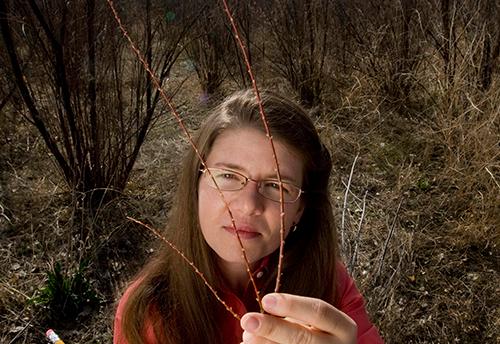
If you’ve hiked or rafted rivers in Colorado, you’ve probably seen tamarisk. It lines waterways in thick stands, blooms in spectacular clouds of pink flowers and birds call from its branches. First introduced in the West in the late 1800s as a way to stabilize the riverbanks, tamarisk did so well that a century later it was labeled a noxious weed. It drove out native plants, sucked up water and created a litany of other evils. Concerned farmers and hunters launched an effort to control tamarisk. They tried to bulldoze it. They unleashed tamarisk-eating beetles, but none of these eradication methods were perfect. Recently the picture has become more complex. Scientists are rethinking how they view tamarisk and other invasive species. Elaine Grant speaks with University of Denver biology professor Anna Sher who explores these issues in her new book: Tamarix: A Case Study of Ecological Change in the American West, co-edited with Martin Quigley.
Photos:
Tamarisk researcher Anna Sher. [Photo: University of Denver]
Tamarisk in bloom. [Photo: Tim Carlson]
A thick stand of tamarisk lines a riverbank in Colorado. [Photo: Anna Sher]








